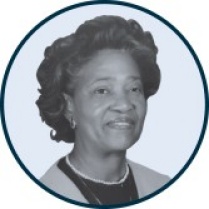In Memoriam

A leader remembered for his innovative reimagining of GSE
Hugh Petrie, former dean who reorganized GSE, was 82 when he died in August after a struggle with a rare muscle disease. He is remembered by colleagues for his thoughtful intelligence and skill at leading reform.
“He was marvelous. He was somebody who did his job so well you didn’t know what going on behind the scenes,” said Stephen Jacobson, a distinguished professor in the Department of Educational Leadership and Policy.
Petrie, a native of Colorado, retired to the state in 1999. He came to UB in 1981 as dean of what was then known as the Faculty of Educational Studies. He consolidated departments. A new name, Graduate School of Education, was chosen to reflect the professional nature of the school.
Petrie was a founding member of the reform-minded Holmes Partnership, 1987-1997, a consortium of 96 research institutions with professional education programs formed in response to troubling trends, including the elimination of schools of education. To combat this, the group set out to change teacher education and strengthen connections—with teachers, administrators and the community.
“The idea was to raise the quality of future teachers,” said Jacobson who worked with others to create the Leadership Initiative for Tomorrow’s Schools, a program for principals and administrators. “He made it easier to do the work we were brought on to do.”
Petrie’s training reflected the varied interests he used to lead. He earned bachelor’s degrees in business and engineering from the University of Colorado, and a PhD in philosophy from Stanford University. He studied math and philosophy at the University of Manchester, England on a Fulbright scholarship.
The Petries organized a February “Banishthe- blues-and-blahs Brunch,” which became an annual winter tradition at the Center for Tomorrow. He wanted people from different departments to gather, get to know each other and have a shared knowledge of where GSE was headed. “That was something people looked forward to every year,” said Hodges.

An advocate for children’s psychological health
LeAdelle Phelps, a widely published GSE professor of psychology, earned her PhD from the University of Utah at 25, an uncommonly young age. For the next four decades, Phelps was a leader in school psychology, publishing three books and creating a popular test for kindergarten readiness.
She was 67 when she died in September of 2019 after battling multiple sclerosis and melanoma.
Early in her career, she was a school psychologist in Davis, Utah. She came to UB in 1989 and was director of the Counseling Psychology/School Psychology Program, associate dean for academic affairs and chair of the Department of Counseling, School and Educational Psychology.
“She had the goal of revamping the school psychology program, getting it approved by the National Association of School Psychologists, and establishing a doctoral program, and she made it happen despite a climate at the time that was more of an old boys’ club,” said Amanda Nickerson, professor and director of the Alberti Center for Bullying Abuse Prevention. “LeAdelle had gutsy determination.”
Phelps wrote and contributed to more than 60 journal articles and was editor of Psychology in the Schools from 1999-2006. This year, she received a posthumous presidential citation from the American Psychological Association in recognition of her contribution to the field.
She taught until her retirement in 2014 and was an influential mentor. “She inspired me to pursue what I love: Conducting research that can benefit the greater good,” said Laura M. Anderson (PhD ’06), a licensed psychologist, now in private practice.

A life of firsts
The career firsts in Lillie P.W. Stephens' life started in 1957 when she became the first Black woman to earn a UB physical education degree. She was also the first Black woman to land a job teaching gym in the Niagara Falls School District. She went on to become its first Black female administrator.
Stephens, who died on May 22 at 84 after a short illness, earned her master’s degree in educational administration from GSE in 1975. She focused her work on the importance of equal opportunity—for minority students and working women.
Stephens was an assistant principal at Trott Vocational High School and LaSalle High School, retiring in 1995 as principal of Niagara Falls’ 60th Street Elementary School.
Stephens was also active in the NAACP and the Alpha Kappa Alpha Sorority. She was president of UB’s Alumni Association and of the National Committee for School Desegregation. During the Clinton Administration, she was appointed to a team evaluating school desegregation.
Her daughter remembers how her mother filed a lawsuit, and won, when she applied for a school job that went to a less qualified candidate.
“She was fiercely principled,” said Pamela Stephens-Jackson (EdM ’91), assistant director of student engagement for fraternity and sorority life at UB. “She had a very strict standard of ethics. She was unaccepting of anything less.”

A founding father of the middle school movement
Without the influence of Conrad Toepfer, American middle schools as we know them may not exist. Toepfer, one of the "founding fathers" of the middle school movement and an evangelist for the education of young adolescents, died April 20 at 86 from cancer. His work helped form the intellectual bedrock of the movement to create distinct, separate middle schools.
“They needed more than either advanced elementary school programs or junior editions of the senior high school,” Toepfer said in an interview for “The Legacy of Middle School Leaders: In Their Own Words.”
Known as “Connie” to friends, family, colleagues and thousands of students, Conrad Toepfer III was born in Frankfurt, Germany in 1927. In 1933, he emigrated to Buffalo, where his father, Conrad Toepfer II, was the Buffalo Philharmonic Orchestra concertmaster.
Like his father, Toepfer was a musician. An accomplished bassist, he joined the union at the Buffalo’s Colored Musicians Club. When other white people would ask him why, he’d say, ‘Because I don’t believe in separation,’ according to a 1994 interview.
His passion for addressing injustice infused the education career that followed. He joined the GSE faculty in 1965 after earning his EdD in curriculum planning from UB in 1962. He was one of seven contributors to the 1982 “This We Believe” position paper about middle school creation. From 1987-88, he was president of the Association for Middle Level Education, which he helped found, launching committees on racial, ethnic and cultural diversity and urban education.
“I don’t think that the association and the movement would have survived without him,” said fellow education researcher Sherrel Bergmann, a former professor at Chicago’s National Louis University. “He was so passionate … that he would do almost anything to get the word out.”